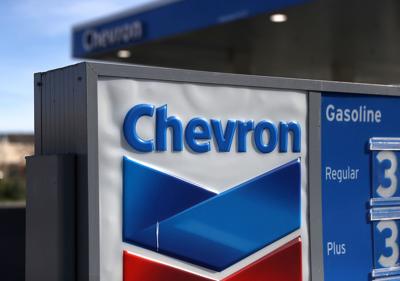Mother Nature, as the adage goes, must really abhor a vacuum. The evidence is how assiduously she has filled the ever-expanding vacuum in local and investigative news with fakery on a scale that gives the very concept of vacuums a bad name.
The newest example comes to us from Chevron Corp., which is no novice in the practice of dressing up corporate PR to look like objective news.
Through the headhunting firm Cella, Chevron lately has been posting a recruiting ad for a business writer to become “an integral member of the ‘newsroom’ team.” (Quote marks in the original.)
The successful applicant will report to the so-called newsroom’s managing editor, fulfilling Chevron’s mission “to proactively tell our story through engaging, consumer-first digital content” by creating “digital news articles, video scripts, newsletters, and social media posts.”
The Cella posting didn’t identify Chevron as the client, mentioning only that the job would be in the “oil and energy” field. But the giant oil company fessed up.
It could hardly do otherwise, because the headhunters reached out proactively, as it were, to a reporter for the energy and environment news site E&E News, who blew the whistle.
“Just like other companies, we are working to evolve the way we create and deliver our branded content to readers, both internal and external,” Chevron spokesman Braden Reddall told me by email. “These are stories that can be leveraged across our digital ecosystem: chevron.com, newsletters, social media, paid search, and the internal news site.”
Put that way, it sounds like just another version of corporate public relations. Lots of companies describe their PR operations as “newsrooms.”
Fewer, however, describe their leaders as managing editors or their products as “news articles,” adopting more of the nomenclature of mainstream journalism. Chevron is further requiring applicants to have at least a bachelor’s degree in “journalism, communications or marketing” and five years’ experience in journalism or those other fields.
Chevron’s effort, like those of other big enterprises, is designed to preempt reporting it can’t fully control, because the latter is produced by independent and objective news organizations. By “proactively” telling its story, as the job listing states, its aim is to muddy the waters of oil company coverage by getting its defense before the public even before critical articles appear.
What’s insidious about this is the blurring of the line between news and propaganda, shifting dramatically in favor of propaganda. What enables it is the shrinking of the news industry as once-robust newspapers, magazines and television news divisions become ever more underfunded and unable to give politicians and businesses healthy scrutiny.
The danger this poses is the undermining of journalists’ credibility just at a moment in time when the need to make politicians and business leaders accountable for their actions is imperative.
The media industry, in a way, has been a willing participant in this trend. Many outlets, from CNN to The Times, run what are known as “advertorials,” native advertising or sponsored content — promotional materials produced by their advertising departments or by advertisers themselves that at a glance resemble news articles or opinion pieces.
News organizations take care to clearly label that material as advertising, communicating the distinction between what they publish as news and what only superficially appears to be news.
They also differ from the output of corporate “newsrooms” because the purpose of the sponsored content, like all the advertising appearing on their pages or in their broadcasts, is to fund their truly public-serving news reporting.
A reader approaches an advertisement guardedly, knowing that it’s calculated to sell a product, Wallace observed. When an ad is disguised as something else — an essay or, let’s say, a news story — readers let down their guard.
Some won’t realize they’re consuming a marketing product, which is a major problem in its own right. Others will realize they’ve been had, and when they do the stink attaches itself not just to the sponsor, but to truly objective reporting as well — not only content that runs next to the marketing, but on all platforms and in all contexts.
That’s a threat to the news business, certainly, given the difficulty of mustering resources to counter the focused stream of self-interested information coming from corporations. But it’s even more of a threat to communities large and small.
We don’t mean to pick on Chevron. The camouflaging of corporate propaganda as news has been going on for many years. It was pioneered by the tobacco industry, which flooded news columns and the airwaves with dubious denials of the dangers of smoking.
Chevron’s compadres in the fossil fuel industry evidently took Big Tobacco’s correspondence course, challenging the scientific consensus about global warming with “advertorials” published on the op-ed pages of leading newspapers.
Sports leagues and teams exert control over reporting by establishing their own “news” websites, such as NFL.com; some corporations can generate tsunamis of uncritical reporting by staging glitzy product events that get covered as breaking news (we’re looking at you, Apple).
In one sense, what Chevron is doing by creating a “newsroom” to produce self-serving commercials is merely surfing along the crest of a wave. But we know from experience that Chevron isn’t shy about trying to play the role of an objective, civic-minded information source, when it’s really just blowing its own horn and trying to drown out critical voices.
The product may sound like news, read like news and look like news, but it won’t be anything like the unvarnished truth.




